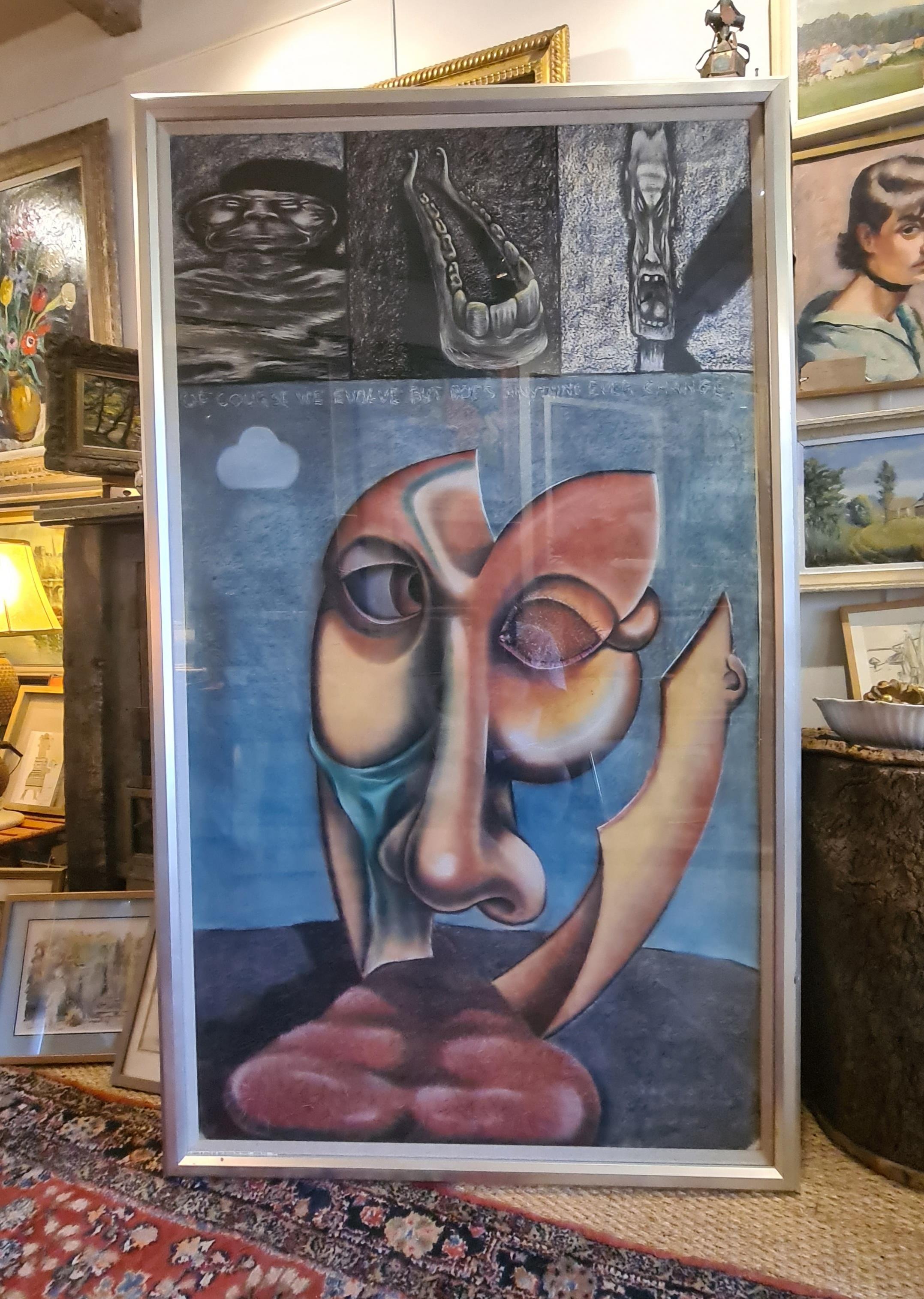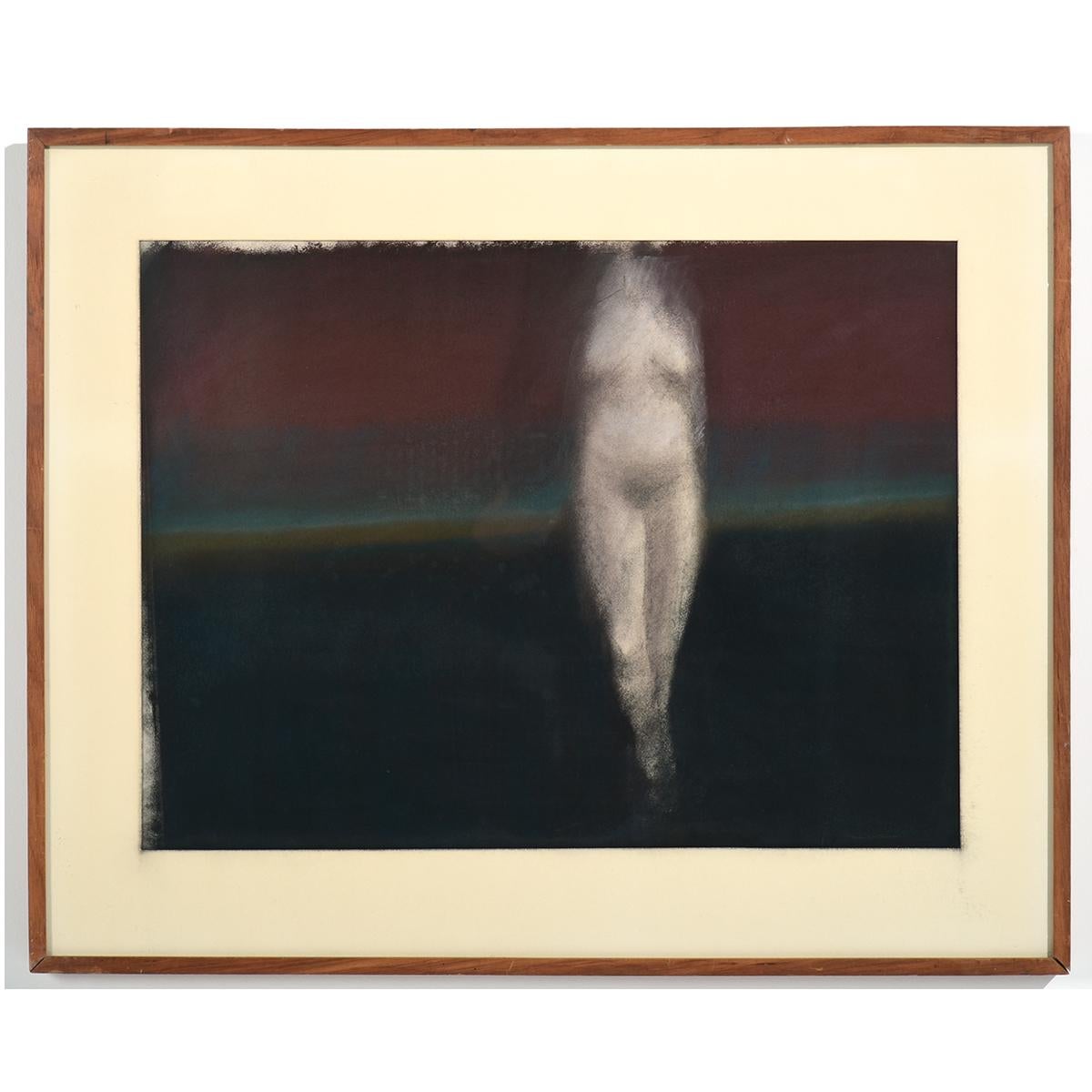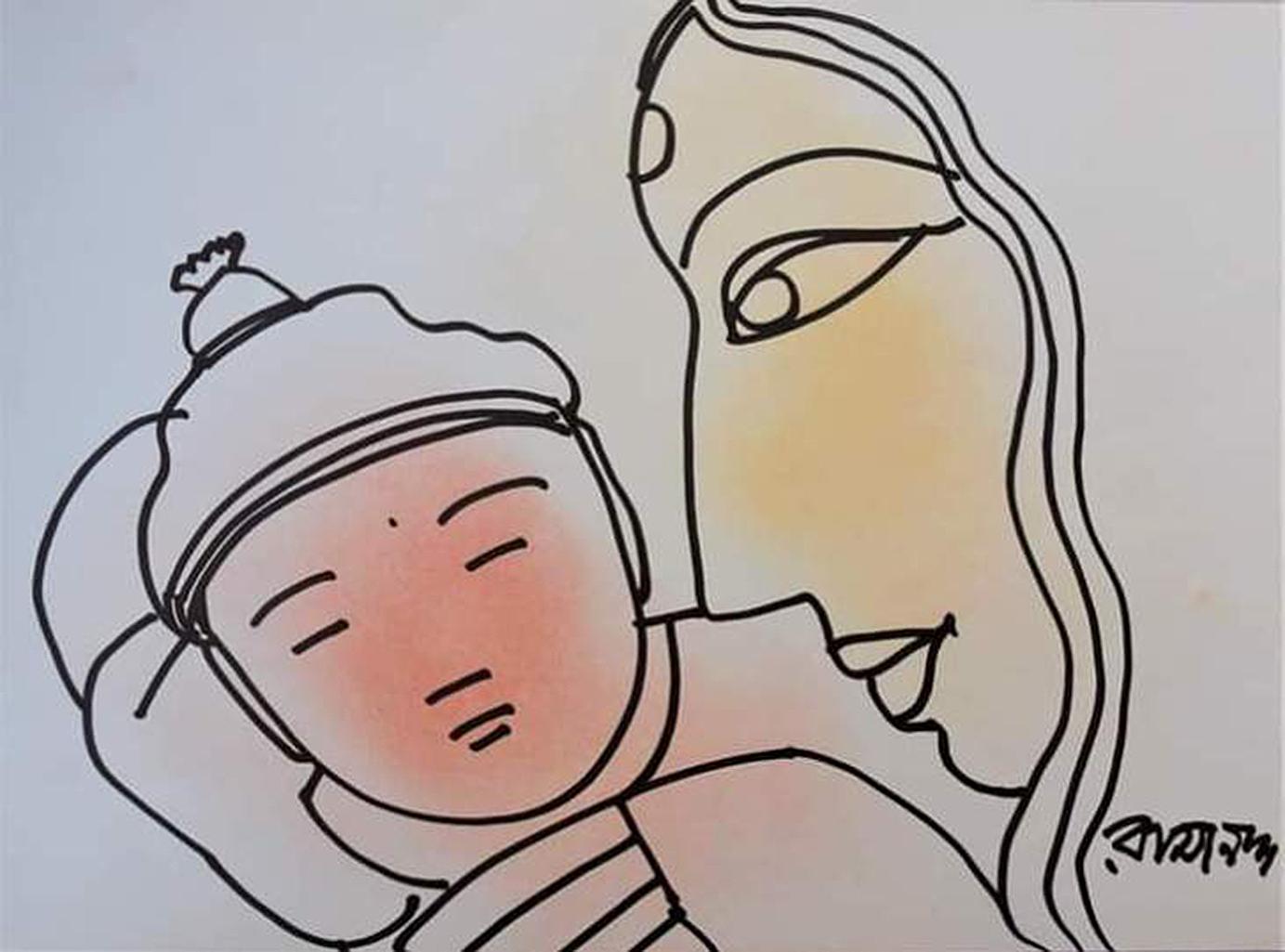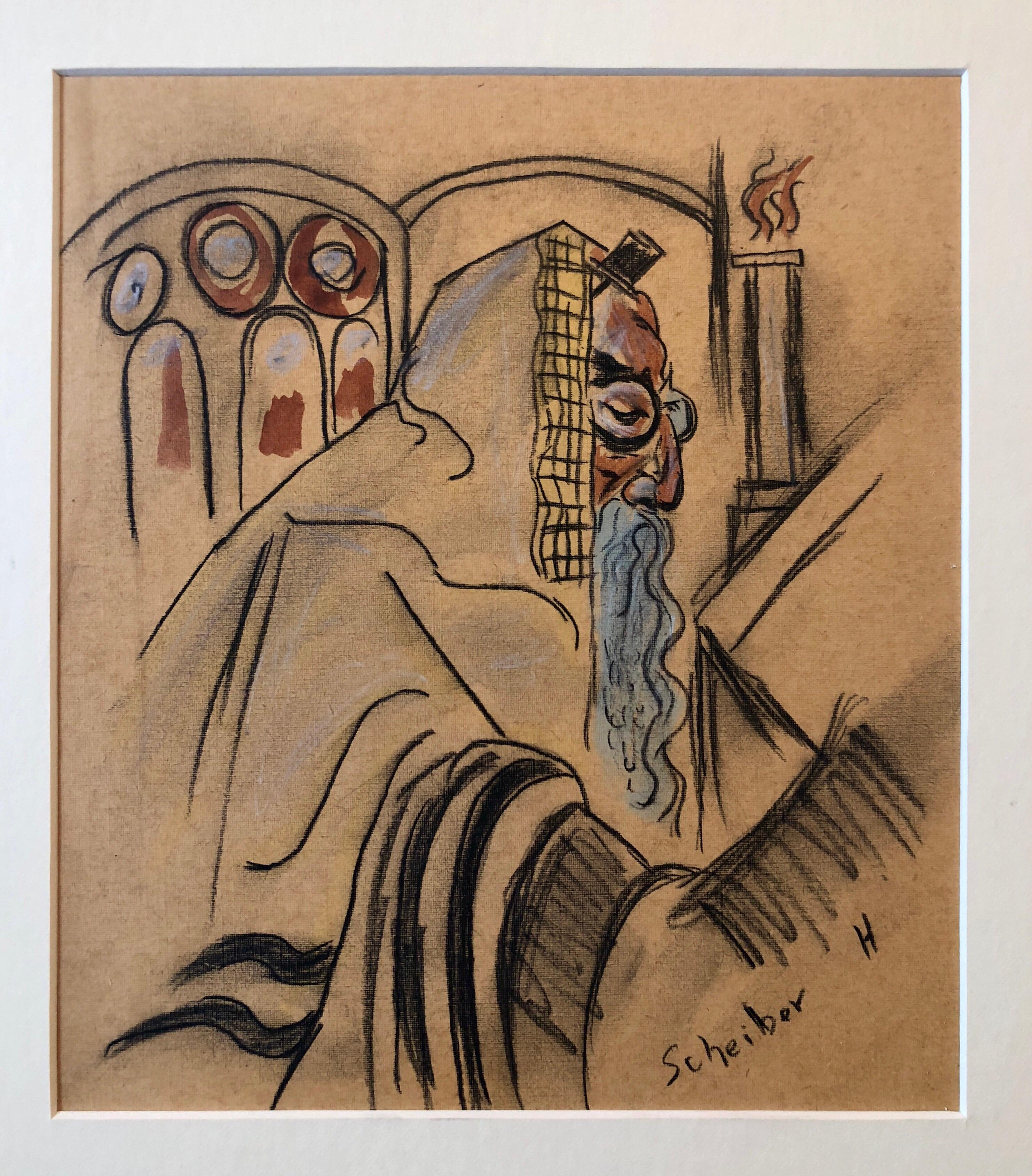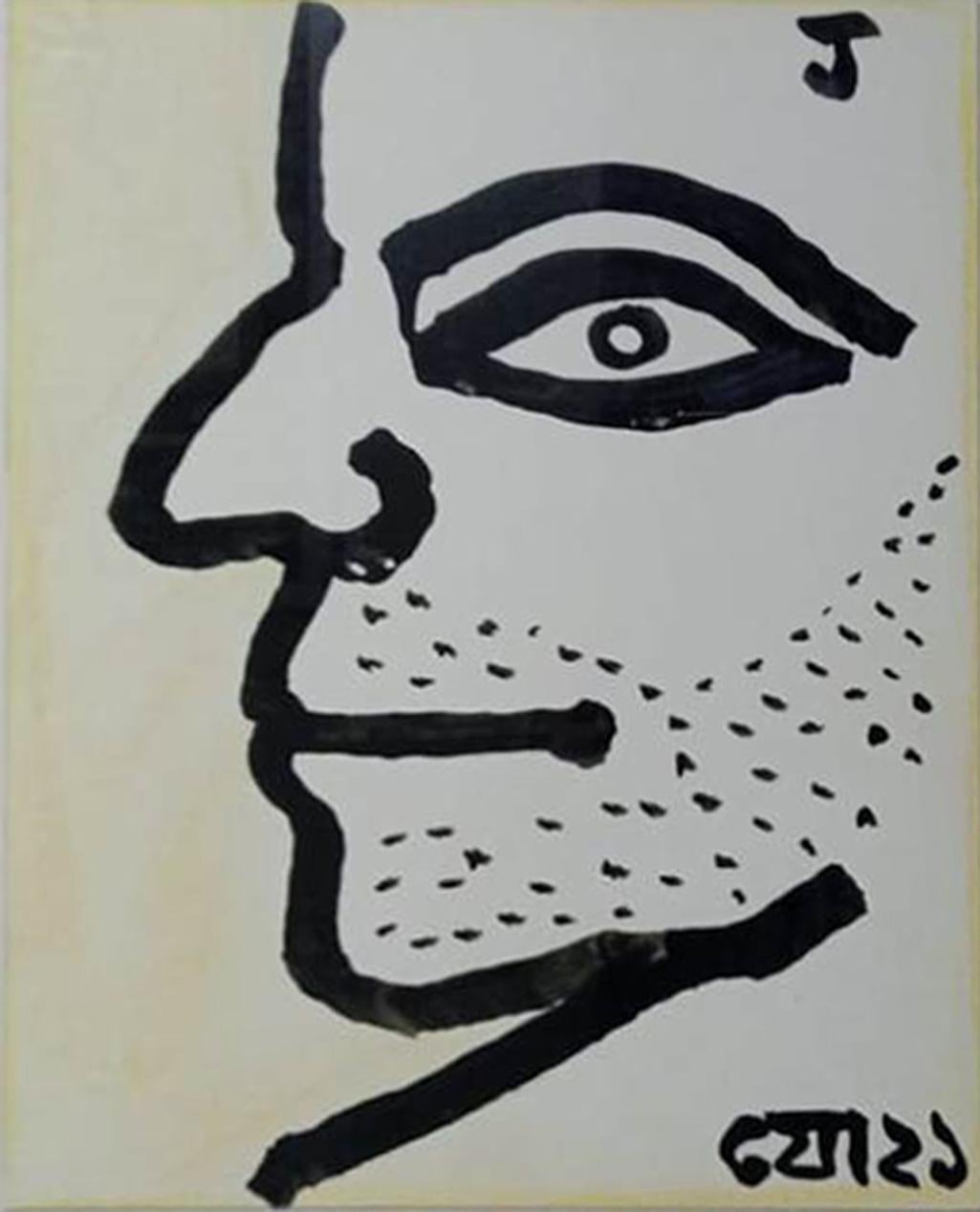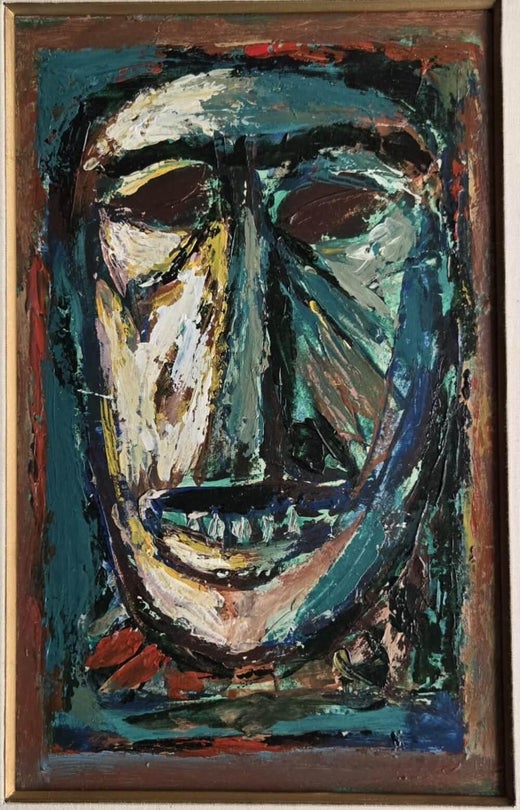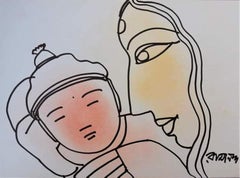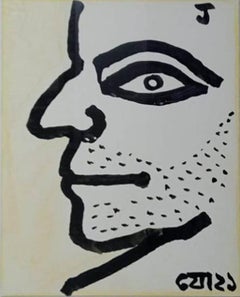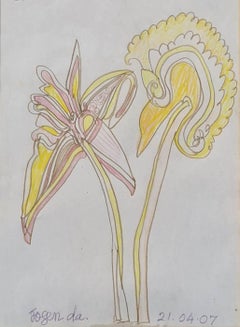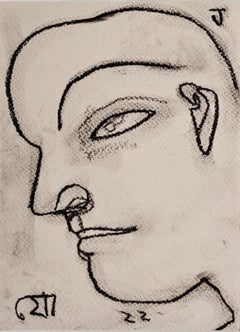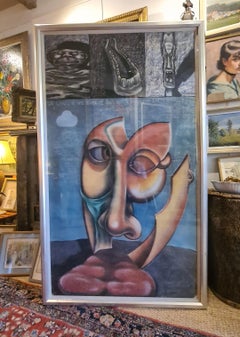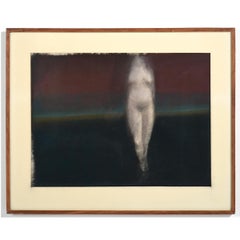Rabin MondalUntitled, Pastel on Paper by Modern Indian Artist Rabin Mondal “In Stock”1981
1981
About the Item
- Creator:Rabin Mondal (1929)
- Creation Year:1981
- Dimensions:Height: 16 in (40.64 cm)Width: 23 in (58.42 cm)Depth: 1 in (2.54 cm)
- Medium:
- Movement & Style:
- Period:
- Condition:
- Gallery Location:Kolkata, IN
- Reference Number:Seller: 81-GK-RM-PP020-16231stDibs: LU604316738382
Rabin Mondal
Rabin Mondal was born in Howrah, Kolkata. Mondal completed his Bachelor of Commerce at Vidyasagar College, Kolkata University, Kolkata in 1952. Mondal attended evening classes at Indian College of Art and Draughtsmanship, Kolkata 1956–58. Mondal completed his Art Appreciation Course, Ashutosh Museum, Kolkata University, Kolkata in 1959. The industrial belt of Howrah, with its inherent tendency towards violence, anguish and suffering influenced Mondal deeply and found its way into his works. So did ugly street battles fought by political parties. Mondal discovered that his artistic temperament was out of keeping with the hostile environment and situation. Besides a debilitating knee injury in his childhood created a sense of isolation in the artist, which also finds expression in his canvas. Mondal says what saved him from sheer madness was his talent in art. In 1949, he joined the Vidyasagar College of Art in Kolkata. At that time, a festival of French artists was being held in the city. It exposed him to the works of French modernist artists. Before this, he had no exposure to the international art world. Mondal was only familiar with different schools of Indian art, particularly the Bengal school. As a young painter, Mondal was attracted by Jamini Roy`s folk style and Rabindranath Tagore`s disquieting paintings and drawings. But the show by French artists was virtually a turning point in his artistic career. "This was like opening a window to an astounding, astonishing, unsuspected world," he says. This encounter with avant-garde Western art helped him to later incorporate elements from it in his work. Mondal worked out of his Howrah studio, churning out a series of kings and queens painted with oil on canvas. These are perhaps Mondal’s best-known works, depicting tragic looking figures, seemingly suffering from paranoia and fear, yet ironically termed kings and queens. Some of the highlights of this series were the works Man Acting as King, King Being Appeased, King Making Confession and King and his Assassin. Mondal also produced a series of deities, which sometimes seem to merge thematically with his queens. His deities are generally depicted with radiate crowns, whereas his kings and queens are not. Other favorite subjects of Mondal were the brothel and the harem, which he depicted in canvases such as the Event in the Red Light Area and Orgy. For someone who hates all forms of pretentiousness, he has done a series of paintings on queens and empresses. "Though they belong to the past, queens live in virtual isolation, and I feel sorry for them," he says. "It is this isolation that makes the queen, for me, a fascinating subject." One of the criticisms leveled against him is that his works are not pleasing to the eye. To which he replies, "Painting is for communication and not for decoration." Mondal has had several solo and group exhibitions. Mondal was awarded "Eminent Painter," All India Fine Arts and Crafts Society (AIFACS), New Delhi in 1996 and "Abanindranath Puraskar," awarded by the Department of Information and Culture, Government of West Bengal, Kolkata in 2001.
- ShippingRetrieving quote...Shipping from: Kolkata, India
- Return Policy
More From This Seller
View AllEarly 2000s Modern Mixed Media
Paper, Pastel, Ink
2010s Modern Figurative Paintings
Paper, Pastel, Ink
2010s Modern Figurative Paintings
Paper, Pastel, Ink
2010s Modern Figurative Paintings
Paper, Pastel
2010s Modern Figurative Paintings
Paper, Pastel
2010s Modern Figurative Paintings
Paper, Pastel, Mixed Media
You May Also Like
Late 20th Century Modern Figurative Paintings
Pastel, Paper
Late 20th Century American Modern Figurative Paintings
Pastel, Paper
20th Century Modern Figurative Paintings
Paper, Pastel
Early 20th Century Modern Figurative Paintings
Paper, Charcoal, Pastel, Watercolor, Gouache
20th Century Modern Figurative Paintings
Pastel, Archival Paper, Color Pencil
1970s American Modern Figurative Paintings
Paper, Pastel, Ink
